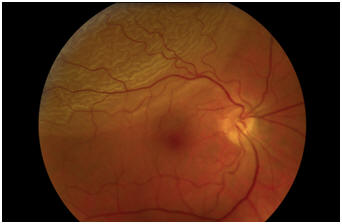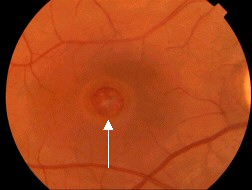Vitreoretinal Surgery
 |
|
Image of a retinal detachment 
Image of a Macular hole
|
Vitreoretinal surgery is required to treat conditions that affect the back
of the eye, these include diagnoses such as: Retinal detachment, diabetic
retinopathy, macular hole, macular degeneration, epiretinal membranes
(macular pucker), severe eye trauma, opacities of the vitreous and
complications of cataract surgery, including dislocated cataract fragments
and severe infection.
Recent advances in vitreoretinal surgery have brought great benefits in
the treatment of conditions that previously would have resulted in
blindness.
Approximately 90% of retinal detachment cases can now be corrected with a
single operation, and new vitreoretinal techniques offer effective treatment
for increasingly common conditions such as macular holes, vitreomacular
traction, epiretinal membranes and some forms of macular degeneration.
Vitreoretinal surgery often involves the insertion of special gasses into
the eye to tamponade (apply gentle pressure) to the retina, to support a
detached retina or help close a macular hole. These gases go away
spontaneously after a number of weeks. Patients are sometimes required to
posture in certain positions following vitrectomy surgery with gas, however
the need for this has reduced with the evolution of improved surgical
techniques.
Vitreoretinal surgery (VR) is often performed under local anaesthetic
just like cataract surgery (although general anaesthetic is sometimes
required). Also stitches are often not needed and recovery is painless and
rapid. |